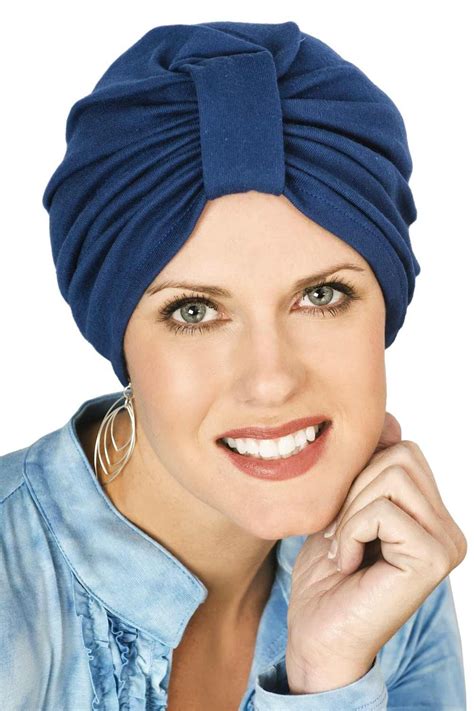Cancer treatment can lead to hair loss, which can be a challenging and emotional experience. Head coverings offer privacy, comfort, and a sense of normalcy during this time. Let’s explore a comprehensive guide to head coverings for cancer patients.

-
Hats: Available in various styles and sizes, hats provide coverage and warmth. Baseball caps, beanies, and sun hats are popular choices.
-
Scarves: Versatile and comfortable, scarves can be styled differently to conceal hair loss. Silk, cotton, and bamboo fabrics offer breathability.
-
Turbans: Stylish and functional, turbans come in pre-tied or wrap-around designs, providing full head coverage and a secure fit.
-
Headbands: Soft and cozy, headbands cover the hairline and add a touch of style to scarves or hats. They are ideal for keeping hair off the face.
-
Wigs: Prosthetic hairs attached to a cap, wigs offer a natural-looking alternative. They require maintenance but provide confidence and a sense of anonymity.
-
Protection: Head coverings shield the scalp from the sun’s harmful UV rays, protecting it from sunburns and potential skin damage.
-
Warmth: In cold weather, head coverings prevent heat loss from the scalp, ensuring comfort and warmth.
-
Comfort: Soft and breathable fabrics soothe the scalp after treatments that may cause sensitivity or dryness.
-
Privacy: Head coverings offer a sense of privacy and control over the appearance during hair loss.
-
Emotional Support: Head coverings can empower cancer patients by giving them a sense of dignity and normalcy.
The best head covering for you depends on your individual needs and preferences. Consider these factors:
- Comfort: Ensure the covering is soft, non-irritating, and fits snugly.
- Style: Choose a covering that aligns with your personal taste and complements your wardrobe.
- Coverage: Determine the level of coverage you need, from partial to full head covering.
- Care: Consider the care instructions for the covering, such as hand-washing or machine-washing.
- Accessorize: Add scarves, hair clips, or jewelry to personalize your head coverings and enhance your look.
- Clean Regularly: Wash or clean your head coverings according to the care instructions to maintain hygiene and prevent odors.
- Choose Natural Materials: Fabrics like cotton, silk, or bamboo allow your scalp to breathe and reduce irritation.
- Avoid Harsh Chemicals: Use mild detergents and avoid chlorine when washing head coverings to prevent damage.
- Store Properly: Store your head coverings in a clean, dry place to prevent mold or mildew.
- Consider Your Skin: If your scalp is sensitive, opt for hypoallergenic materials or consult a dermatologist for recommendations.
- American Cancer Society: Provides information on head coverings, support groups, and other resources.
- CancerCare: Offers counseling, financial assistance, and support for cancer patients facing hair loss.
- National Cancer Institute: Gives comprehensive information on cancer treatment and hair loss, including head covering options.
- Look Good…Feel Better: A non-profit organization that provides makeovers, including head coverings, for cancer patients.
Head coverings are a valuable tool for cancer patients, offering comfort, protection, and a sense of dignity. By understanding the different types, benefits, and care tips, you can choose the right coverings to enhance your well-being during and after treatment. Remember, you are not defined by your hair loss; your resilience and spirit will always shine through.
